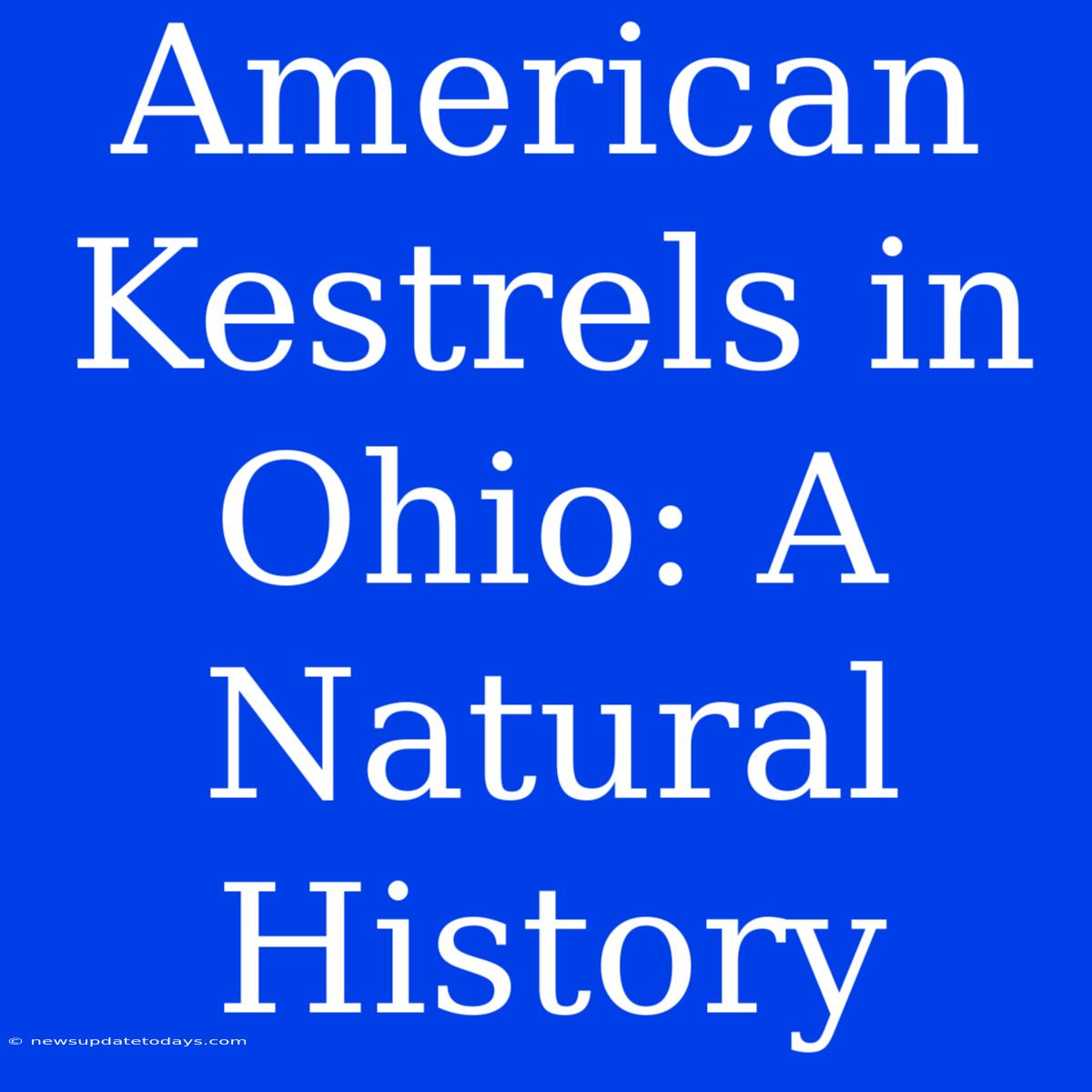American Kestrels in Ohio: A Natural History
American Kestrels, the smallest falcon in North America, grace the skies of Ohio with their vibrant presence. Understanding their natural history, from habitat preferences to conservation challenges, is crucial to appreciating and protecting these magnificent birds. This article delves into the fascinating world of American Kestrels in the Buckeye State.
Habitat and Distribution in Ohio
Ohio's diverse landscape provides suitable habitats for American Kestrels. They favor open areas with scattered trees or shrubs, including:
- Farmlands: Fields, pastures, and hayfields offer abundant hunting grounds for these aerial predators.
- Grasslands: Native prairies and restored grasslands provide ideal nesting and foraging locations.
- Woodlands edges: The transition zone between forests and open areas offers both perching sites and hunting opportunities.
- Urban areas (occasionally): Kestrels can adapt to urban environments, particularly those with green spaces and tall structures for nesting.
While found throughout Ohio, their distribution can vary depending on prey availability and habitat quality. Areas with significant agricultural land and grasslands generally support higher populations.
Diet and Foraging Behavior
American Kestrels are highly skilled hunters, utilizing their sharp eyesight to spot prey from above. Their diet primarily consists of:
- Insects: Grasshoppers, crickets, beetles, and other insects form a significant portion of their diet.
- Small rodents: Voles, mice, and shrews are also important prey items, particularly during colder months.
- Reptiles and amphibians: Lizards, frogs, and snakes are occasionally consumed.
- Birds: Small birds may be taken, although this is less frequent.
Their hunting strategy involves hovering in mid-air before making a swift dive to capture prey. They often perch on utility poles, fence posts, or trees to scan for potential meals.
Breeding and Nesting
American Kestrels typically begin nesting in early spring. They utilize various cavities for nesting, including:
- Natural cavities: Holes in trees, cliffs, or rock crevices.
- Artificial nest boxes: These are increasingly important, especially in areas where natural cavities are scarce. The installation of nest boxes is a vital conservation effort.
The female lays a clutch of 4-7 eggs, which she incubates for about 28-30 days. Both parents participate in feeding and raising the young, which fledge (leave the nest) after about 30 days.
Conservation Status and Threats
While not currently considered endangered in Ohio, American Kestrels face several threats:
- Habitat loss: The conversion of farmland to urban development and the intensification of agricultural practices are reducing suitable habitat.
- Pesticide use: Exposure to pesticides can negatively impact their health and reproductive success.
- Collisions with vehicles and structures: Road mortality and collisions with buildings can significantly reduce populations.
- Predation: Larger birds of prey and mammals can prey on adult kestrels or their young.
Conservation efforts focus on protecting and restoring habitat, promoting responsible pesticide use, and installing nest boxes. Citizen science initiatives, such as monitoring nesting sites, are also critical for understanding population trends and guiding conservation strategies.
Observing American Kestrels in Ohio
With their distinctive reddish-brown coloration and characteristic hovering flight, American Kestrels are a joy to observe. Visiting areas with suitable habitats, particularly during the breeding season, increases your chances of spotting these beautiful birds. Remember to always observe them from a respectful distance to avoid disturbing their natural behaviors.
By understanding the natural history and conservation challenges faced by American Kestrels in Ohio, we can all contribute to their continued survival and the preservation of this vital part of our state's biodiversity.

